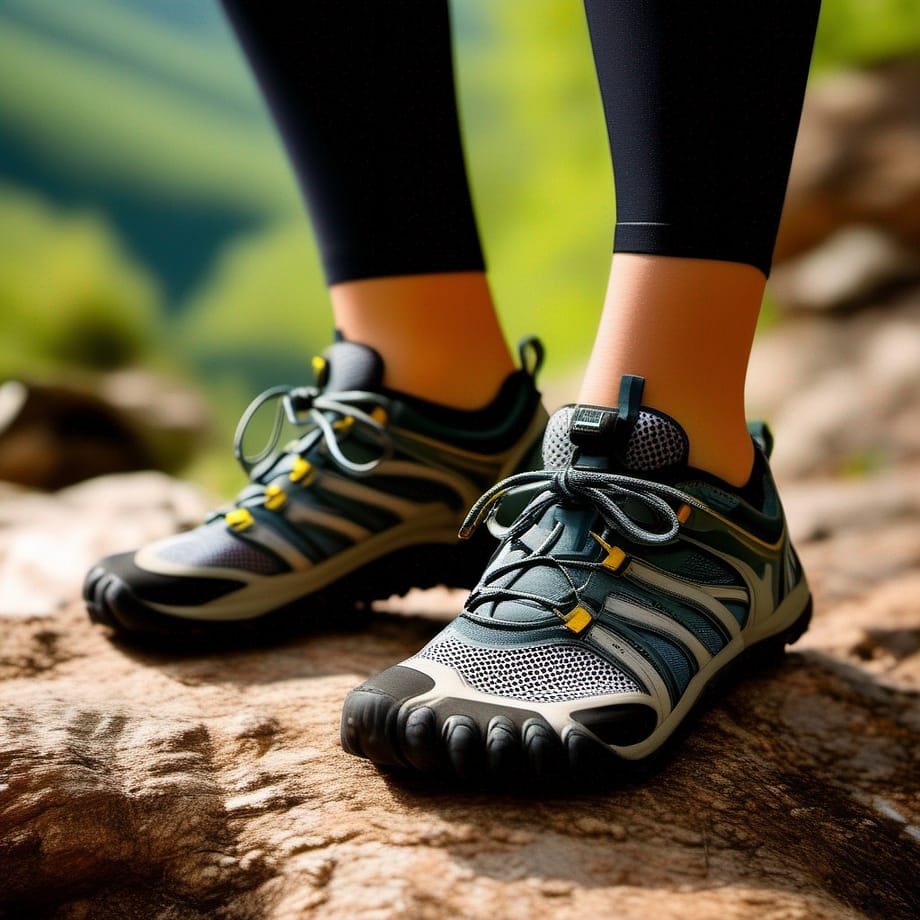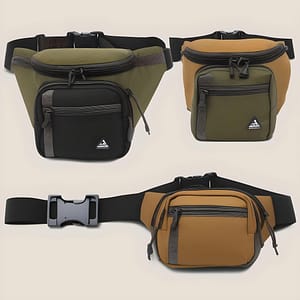Barefoot hiking shoes, also known as minimalist hiking shoes, are becoming increasingly popular among hikers, and for good reason. These innovative shoes offer a range of benefits that can enhance your hiking experience. From increased comfort and support to improved balance and stability, barefoot hiking shoes are designed to mimic the feeling of walking barefoot while providing the necessary protection for rough terrains. In this article, we will explore the numerous advantages of wearing barefoot hiking shoes, discuss their key features, provide tips on how to choose the right pair, and offer advice on how to make the most out of your barefoot hiking shoe experience.
Benefits of Barefoot Hiking Shoes
Enhanced Comfort: Minimalist hiking shoes provide maximum comfort on the trail. The lightweight design and flexible sole allow for natural movement, preventing discomfort or fatigue during long hikes.
Barefoot hiking shoes provide maximum comfort, improved balance and stability, strengthened foot muscles, better sensory feedback, and reduced risk of injuries on the trail.
Improved Balance and Stability: With their minimalist design, barefoot hiking shoes promote better balance and stability. The low-profile construction allows your feet to connect with the terrain, giving you a solid foundation for navigating uneven surfaces.
Strengthened Foot Muscles: Wearing barefoot shoes helps strengthen the muscles in your feet. The absence of cushioning forces your muscles to work harder, leading to increased strength and stability over time.
Better Sensory Feedback: These shoes offer improved sensory feedback as they allow you to feel the ground beneath you more effectively. This enhanced connection with the trail enhances your overall hiking experience by providing a greater sense of control.
Reduced Risk of Injuries: By promoting natural foot movement and strengthening foot muscles, barefoot hiking shoes reduce the risk of common injuries such as sprains or strains. Their minimalist design encourages proper biomechanics while protecting your feet from sharp objects on the trail.
1. Enhanced Comfort
Enhanced Comfort:
- Barefoot hiking shoes provide optimal comfort for long hikes on the trail.
- The lightweight and flexible design of these shoes allows for natural movement and a comfortable fit.
- With their soft, breathable materials, barefoot hiking shoes prevent discomfort such as blisters or hot spots.
- These shoes offer cushioning and support where it’s needed most, ensuring a comfortable experience throughout your hike.
2. Improved Balance and Stability
Barefoot hiking shoes provide improved balance and stability on the trail. These innovative shoes offer a range of features that enhance your overall performance and safety while hiking.
- Lightweight design for better agility
- Flexible soles for increased traction
- Anatomical shape to support natural foot movement
3. Strengthened Foot Muscles
Minimalist hiking shoes provide the perfect opportunity to strengthen your foot muscles. Unlike traditional boots, barefoot shoes allow for more natural movement and flexibility, engaging muscles that are often neglected. By wearing these shoes on the trail, you can improve your overall foot strength and stability while enjoying the comfort they offer. Whether you’re a seasoned hiker or just starting out, incorporating barefoot hiking shoes into your routine can have long-lasting benefits for your foot health.
The minimalist design encourages proper alignment and activates a wide range of muscles in your feet. The lightweight construction allows for greater sensory feedback from the ground beneath you, promoting a stronger connection between your mind and body as you navigate various terrains. With each step taken in these comfortable yet supportive shoes, you’ll be actively working towards building strong and resilient foot muscles that will enhance both your performance on the trail and everyday mobility.
4. Better Sensory Feedback
Barefoot hiking shoes offer better sensory feedback, allowing you to feel the trail beneath your feet. The minimalist design enhances your connection with nature and provides a more authentic hiking experience. With these shoes, you can fully immerse yourself in the environment and react quickly to changes in terrain for a safer and more enjoyable hike.
5. Reduced Risk of Injuries
Barefoot hiking shoes provide a reduced risk of injuries on the trail. The minimalist design and flexibility of these shoes allow for better foot and ankle alignment, minimizing the chance of sprains or strains. Additionally, their lightweight construction promotes agility and quick reactions to uneven terrain, reducing the likelihood of tripping or falling.
Features of Barefoot Hiking Shoes
Minimalist Design: Barefoot hiking shoes are designed with a minimalist approach, focusing on simplicity and functionality. They have a low-profile design that allows for natural foot movement and flexibility, mimicking the feeling of walking barefoot. This minimalistic design eliminates unnecessary padding and bulk, providing a more authentic connection to the terrain.
Flexible Soles: One of the key features of barefoot hiking shoes is their flexible soles. These shoes are constructed with thin yet durable materials that allow your feet to bend and flex naturally as you walk or hike. The flexible soles help enhance proprioception, allowing you to feel the ground beneath you and adjust your footing accordingly.
Wide Toe Box: Unlike traditional hiking shoes that often squeeze your toes together, barefoot feature wide toe boxes. This extra room allows your toes to splay naturally while providing stability and balance on uneven surfaces. The wide toe box promotes proper foot alignment and reduces the risk of developing foot deformities or discomfort during long hikes.
Lightweight and Breathable: Barefoot hiking shoes are known for being lightweight and breathable, making them ideal for extended outdoor activities. These shoes are made with breathable materials that allow air circulation around your feet, preventing excessive sweating or odor buildup. The lightweight construction ensures agile movement without compromising durability or protection in rugged terrains.
1. Minimalist Design
Minimalist design is a key feature of barefoot hiking shoes. These shoes are designed with simplicity in mind, focusing on essential elements without unnecessary embellishments or padding. This minimalist approach allows for a more natural and unrestricted movement while providing the necessary protection and support for your feet on the trail.
The minimalistic design of barefoot shoes offers several advantages to hikers. By eliminating excess material and bulky features, these shoes are lightweight, allowing for faster and more agile movements. Additionally, their streamlined construction promotes better proprioception, enabling you to feel the terrain beneath your feet and respond accordingly.
2. Flexible Soles
One of the key advantages of barefoot hiking shoes is their flexible soles. Unlike traditional hiking boots that have rigid soles, barefoot shoes allow for natural foot movement and better grip on uneven terrain. This flexibility enhances comfort and agility while reducing the risk of foot fatigue or injury during long hikes.
In addition to providing a more natural walking experience, the flexible soles of barefoot shoes also promote better sensory feedback. By allowing your feet to feel the ground beneath them, these shoes enhance balance and proprioception, helping you navigate tricky trails with ease.
3. Wide Toe Box
One of the key features to look for in barefoot is a wide toe box. A wide toe box allows your toes to splay naturally, providing more room and reducing pressure on your feet. This not only enhances comfort but also promotes better balance and stability on the trail. Additionally, a wide toe box helps prevent common foot problems such as bunions and hammertoes by allowing your toes to move freely and maintain their natural alignment while hiking.
4. Lightweight and Breathable
Lightweight and Breathable:
- Enhanced air circulation keeps your feet cool and dry
- Ultra-light construction reduces fatigue during long hikes
When it comes to barefoot hiking shoes, lightweight and breathable are key features that make a difference. These shoes are designed with enhanced air circulation to keep your feet cool and dry, even on hot summer days. The ultra-light construction also helps reduce fatigue during long hikes, allowing you to enjoy the trails without feeling weighed down.

How to Choose the Right Barefoot Hiking Shoes
Proper fit is crucial when choosing barefoot hiking shoes. Ensure that the shoes have a snug, yet comfortable fit, allowing your toes to splay naturally while providing support to your arches and heels.
Consider the trail terrain when selecting barefoot hiking shoes. Look for shoes with durable soles that offer excellent traction on various surfaces such as rocky trails or muddy paths, providing stability and preventing slips.
Prioritize durability and protection in your choice of barefoot hiking shoes. Go for pairs made from high-quality materials that are resistant to wear and tear, ensuring they can withstand the rigors of outdoor adventures while protecting your feet from sharp objects or rough terrain.
1. Proper Fit
Proper Fit:
- Ensure the shoes are the correct size and fit snugly to prevent blisters and discomfort.
- Look for a shoe with a wide toe box to allow natural toe splay and prevent cramped toes during long hikes.
2. Consider the Trail Terrain
Consider the trail terrain when choosing barefoot hiking shoes. Different terrains require different levels of grip and protection. For rocky trails, opt for shoes with a durable and puncture-resistant sole to prevent injuries. On muddy or slippery surfaces, look for shoes with extra traction to maintain stability and avoid falls.
3. Prioritize Durability and Protection
When choosing barefoot hiking shoes, prioritize durability and protection to ensure they can withstand the demands of the trail. Look for shoes made from high-quality materials that are known for their durability, such as reinforced rubber soles and sturdy uppers. Additionally, seek out features like toe guards or rock plates to protect your feet from sharp rocks or debris on the trail. By prioritizing durability and protection, you can enjoy your barefoot experience without worrying about damaging your shoe or injuring your feet.
Tips for Wearing Barefoot Hiking Shoes
Start Gradually: When wearing barefoot hiking shoes for the first time, it’s important to start gradually. Begin by wearing them for short periods of time and on easier trails to allow your feet to adjust. This will help prevent discomfort or potential injuries as your muscles and tendons adapt to the new style of footwear.
Focus on Technique: With barefoot hiking shoes, proper technique becomes even more crucial. Pay attention to your foot placement and stride, focusing on a mid-foot strike rather than heel striking. Engage your core muscles and maintain good posture for optimal balance and stability on the trail.
Maintain Foot Hygiene: Because barefoot hiking shoes have minimal cushioning and ventilation, it’s essential to prioritize foot hygiene. Keep your feet clean, dry, and free from debris during hikes. Consider using moisture-wicking socks or applying talcum powder before putting on your shoes to minimize sweat buildup and reduce the risk of blisters or fungal infections.
1. Start Gradually
- Ease into barefoot hiking by gradually increasing the duration and intensity of your hikes.
- Begin on flat, soft surfaces like grass or sand to allow your feet to adjust to the new sensation.
- Progressively introduce more challenging terrains such as gravel or uneven trails.
2. Focus on Technique:
- Pay attention to your posture and stride while hiking.
- Land softly on the balls of your feet rather than striking with the heel.
- Take shorter strides and maintain a steady pace to minimize impact on joints.
3. Maintain Foot Hygiene:
- Cleanse and dry your feet thoroughly after each hike to prevent infections or fungal growth.
- Trim toenails regularly to avoid discomfort or potential injuries during barefoot hiking.
2. Focus on Technique
Proper technique is crucial when hiking barefoot . Pay attention to your stride and foot placement to minimize strain on your joints and muscles. Engage your core and maintain an upright posture for optimum balance and stability on the trail.
3. Maintain Foot Hygiene
Proper foot hygiene is essential when wearing barefoot shoes. Keep your feet clean and dry to prevent the growth of bacteria and fungus. Wash your feet regularly with a mild soap, paying special attention to the spaces between your toes. Dry them thoroughly after washing, as moisture can lead to unpleasant odors and skin irritation.
What are the different types of barefoot hiking shoes available?
Barefoot hiking shoes are designed to provide a natural and unrestricted feel while walking on rough terrains. These shoes aim to mimic the experience of walking barefoot, allowing your feet to move and flex as they naturally would. Here are some of the different types of barefoot hiking shoes available:
1. Barefoot Trail Shoes: These shoes are specifically designed for hiking and walking on trails. They have a thin sole that offers minimal cushioning, allowing for better ground feel and proprioception. They are typically lightweight, flexible, and have an aggressive outsole for better traction on various terrains.
2. Barefoot Trail Runners: These shoes are designed for more intense activities, such as trail running or fast hiking. They provide a minimal cushioning to protect your feet from sharp objects while maintaining a low-profile design. They are lightweight, breathable, and offer a snug fit for better control and agility.
3. Barefoot Water Shoes: If you enjoy hiking near water bodies or crossing streams, barefoot are a great option. These shoes are designed to be quick-drying, with mesh uppers that allow water to drain easily. They provide good traction on wet surfaces and protect your feet from rocks and debris.
4. Barefoot Sandals: For those who prefer the utmost freedom and minimalism, barefoot sandals are an excellent choice. These consist of a thin sole and straps that secure the shoes to your feet.
Are they waterproof?
When it comes to barefoot hiking shoes, one of the most common concerns is whether they are waterproof. Waterproof shoes can be crucial for hikers who often encounter wet conditions or need to cross streams and rivers during their outdoor adventures. Therefore, it is important to understand the waterproof capabilities of barefoot hiking shoes before making a decision.
While some barefoot hiking shoes may offer water-resistant properties, it is unlikely that they will provide the same level of waterproofing as traditional hiking boots. Waterproofing is typically achieved through the use of materials such as Gore-Tex or other waterproof membranes, which are not commonly found in barefoot shoes.
That being said, there are some barefoot hiking shoes that have water-resistant features, which can help keep your feet dry in light rain or damp conditions. These shoes often have a durable water repellent (DWR) coating on the upper material, which helps to repel water and prevent it from soaking into the shoe. However, it is important to note that water resistance is not the same as waterproofing.
Waterproof shoes can be crucial for hikers who often encounter wet conditions or need to cross streams and rivers during their outdoor adventures. Traditional hiking boots are typically made with waterproof materials such as Gore-Tex or other waterproof membranes, providing a high level of protection against water ingress.
In contrast, minimalist hiking shoes prioritize breathability and flexibility over waterproofing. While some barefoot hiking shoes may offer water-resistant properties, it is unlikely that they will provide the same level of waterproofing as traditional hiking boots. Waterproofing is achieved through the use of specialized materials and construction techniques that are not commonly found in minimalist shoes.
Conclusion
In conclusion, barefoot hiking shoes offer a multitude of benefits for outdoor enthusiasts. Not only do they provide unparalleled comfort and support on the trail, but they also promote better foot health and natural movement. It is crucial to choose the right pair of barefoot hiking shoes to ensure optimal performance and protection against potential hazards. We encourage everyone to give barefoot hiking shoes a try and experience the joy of walking in harmony with nature while enjoying all the advantages they have to offer.





